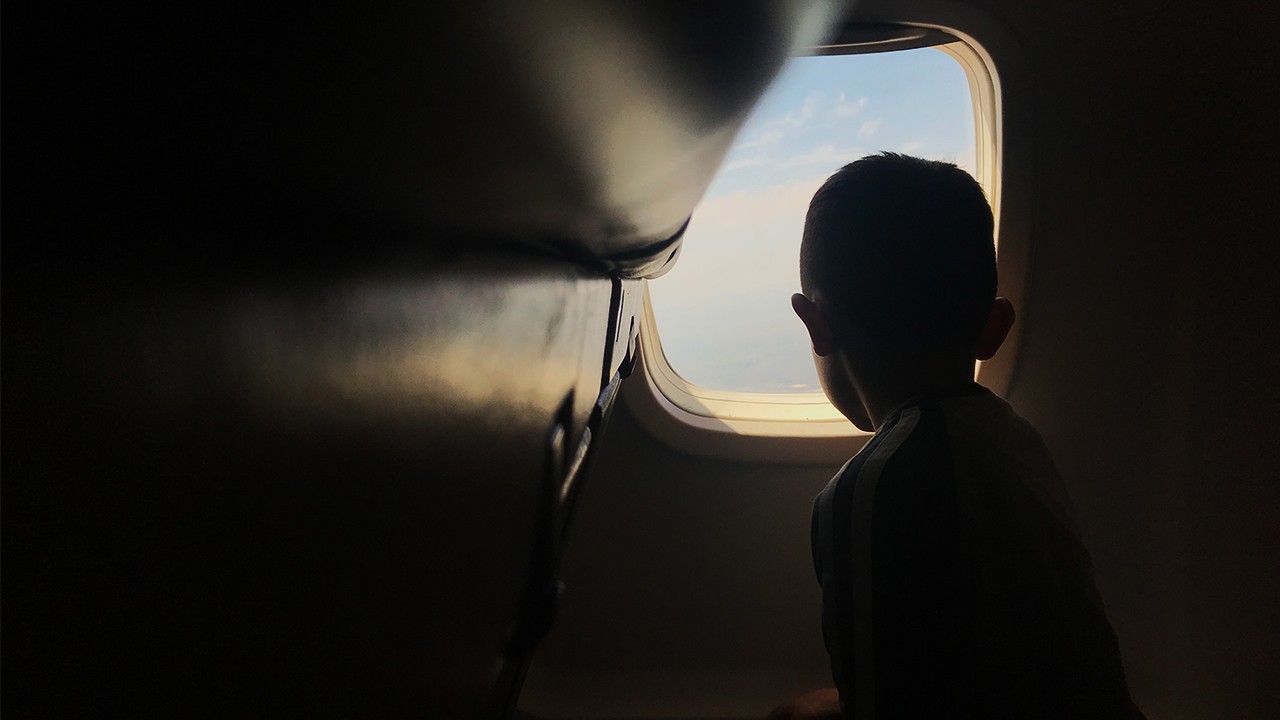California firefighters are dealing with the worst fire season in years. Two firefighters died battling the Carr fire, two more died in the Ferguson fire in Yosemite, and now the Mendocino Complex fire has bloomed into the second-largest blaze in California history—only 30 percent of the fire was contained as of Monday. Battling these fires is grueling work, and those who do it have to contend with terrible things.
Advertisement
“Any person in the fire service—you see things you don’t want to see,” said Captain Warren Parrish, a 24-year veteran firefighter. “Vehicle accidents, children harmed or killed, somebody who hung themselves, having to cut them down. When you see those things throughout your entire career, it starts to add up.”Mental health support services have existed at Cal Fire and other departments across the county for years, but at Carr, those services have been brought to the front lines, setting up a group of support staff, including Parrish, at base camp.“Emotionally and psychologically it’s very difficult to be out for 30 days, away from our families, seeing the things that we see, sleeping in the dirt, seeing death, all of that takes a toll,” said Deputy Chief Mike Ming, who leads Cal Fire's employee support services. He and a group of firefighter peer counselors stand by, check in with people as they come off the fire line, and let them know that if they feel like talking to somebody, they’re there for them.“You can start to pick out the people that are having a hard time,” said Parrish. “You can tell it’s affecting them.”But the culture of the department makes helping people challenging. “There’s a stigma,” said Ming. “It comes from a history of a suck-it-up attitude, because that’s just what we do. We’re not awesome at tapping into emotions and we can store a whole career’s worth.” Plus, getting emotional in the midst of a crisis is not an asset. “It makes us good at our jobs to be able to compartmentalize,” said Parrish. “If we weren’t able to compartmentalize, we wouldn’t be able to function.”
Advertisement
A firefighter walking through smoke at the Mendocino Complex fire. Photo by JOSH EDELSON/AFP/Getty
Parrish, who was a helitack captain, never thought much about the emotional toll until a near-death experience a few years ago when his helicopter was burned while he and his crew were attacking a wildfire. Months later, on another fire, he found himself landing in the exact same spot as that first incident. “I got out of the [chopper], put my gear on, grabbed my hand tool and all the events started rolling back in my head,” he said.That day, he picked a fight with his partner for no reason, then at the end of his shift went home, started drinking heavily, and passed out. The next morning, after his wife and kids left the house, he started drinking again. “And I went out to my back deck at my house and I just uncontrollably could not stop crying,” he said. “All the things I’ve seen in my career started coming back." He came close to taking his own life, but then, he told me, "I thought about my kids, and them having to come home and find their dad hanging there. I climbed back down, still couldn’t stop crying.”When his wife came home, they talked, she called a counselor, and he got help. One of the questions the counselor asked was if he felt he hit bottom. “My answer was, I hope so,” he said.

Firefighters are more likely to die by suicide than in the line of duty, according to a study by the Ruderman Family Foundation published in April. In 2017, at least 103 firefighters died by suicide, compared with 93 who died in the line of duty, according to the report. More departments are starting to take that seriously. At Cal Fire, Ming is sensitive to the culture and that people can be self-conscious about seeking help. He drives an unmarked vehicle and doesn’t wear his uniform; he meets employees in coffeehouses instead of at fire stations, where they’ll feel more comfortable to talk confidentially. When he checks in with people to see how they’re doing, he told me he gets a lot of “I’m fine,” and “I’m good, bro,” and he doesn’t press.

Firefighters are more likely to die by suicide than in the line of duty, according to a study by the Ruderman Family Foundation published in April. In 2017, at least 103 firefighters died by suicide, compared with 93 who died in the line of duty, according to the report. More departments are starting to take that seriously. At Cal Fire, Ming is sensitive to the culture and that people can be self-conscious about seeking help. He drives an unmarked vehicle and doesn’t wear his uniform; he meets employees in coffeehouses instead of at fire stations, where they’ll feel more comfortable to talk confidentially. When he checks in with people to see how they’re doing, he told me he gets a lot of “I’m fine,” and “I’m good, bro,” and he doesn’t press.
Advertisement
“Inevitably I get a call or run into somebody where something has brought them to their knees, they are in need of help, and it’s at that point they say, Well, what have you got?” he said. Ming will often refer people to clinicians who specialize in treating first responders, substance abuse treatment if necessary, and family therapy.Ben Vernon, a firefighter engineer with San Diego City Fire Department, was hesitant to seek mental health care even after he was stabbed repeatedly by a bystander during a routine medical call. His lung was punctured, and he nearly died. “I was struggling, I was having nightmares, and I remember feeling miserable,” he told me. “We don’t really talk about mental health. You’re expected to handle your shit, be a tough guy.”It wasn’t until he saw body-cam video of the incident played on the news that he realized how bad it was. “You can actually see a knife in my chest, and I remember thinking, I have actual scars to prove mental injury. Most people don’t. You see a dead baby or a raped woman or a decapitated head—that is mental injury that no one can see.” The video evidence became like a “get out of jail free” card, as he described it to me. After it was played on the news, friends drove to his house to check in on him. “They were asking if I was mentally OK. And I thought, No one will make fun of me, because my guys have seen the tape. They know how bad it was. I’m kind of exempt.”
Advertisement
He showed the tape to a workers’ comp psychologist, and said he was having trouble sleeping. The psychologist told him to lay off the caffeine. He needed a new doctor. Through a friend, he found someone who treats police officers. “He said, Why are you here?” Vernon told me. “I said, Because a guy tried to murder me.” The psychologist immediately asked how his nightmares were, without Vernon bringing up any nightmares, and he knew he had the right person.
San Diego Fire-Rescue (SDFD) now has a contract with a group of psychologists who serve first responders exclusively. Vernon said that when word got out, others immediately signed up: “That was a huge wake-up call for our department.” For privacy reasons, the department doesn’t track people who use mental health services, but David Picone, the battalion chief who oversees health and safety for SDFD, told me that people are becoming more comfortable reaching out for help. “We’ve had a steady increase in billable hours, so we know more people are using the service.”“Five years ago we were not speaking to this issue of mental health, mental wellness in the fire service,” said therapist Tina Casola, the founder of First Alarm Wellness, a group that treats and educates first responders about mental health issues. In her experience, she said, “One hundred percent of firefighters have been influenced in some way” by trauma.“When the smoke is gone and the flames are out and everybody’s back to where they’re from and people are left to soak it in, that’s when things can really hit them."
–Warren Parrish
Advertisement
A firefighter battles the Carr fie. Photo by MARK RALSTON/AFP/Getty
Introducing the concept of self-care and mental health awareness can be more challenging with old-school firefighters. “The millennial generation—they get it,” said Ming. “They’re like, Oh, that makes sense. Cool. Let’s learn how to fight fire now. But folks that are 20, 30 years deep they were trained that you need to suck it up.”Fighting wildfires is physically exhausting, often Sisyphean work. Vernon recounted one point early in his career when he spent an entire day working to save a house, only to have the wind shift and the house burn down. “It’s very emotionally draining,” he said. “Because as a firefighter, you think, I’m going to save houses, do all this great work, make a difference and then you’re like, Why am I even here? We’re getting our butts kicked, the fire just burns everything down.”“When the smoke is gone and the flames are out and everybody’s back to where they’re from and people are left to soak it in, that’s when things can really hit them,” said Parrish. “Those are the people we want to reach so it doesn’t get to the place where I got to.”While we were on the phone, Ming, who was talking to me from near the Carr fire, noticed steam coming out of his own car. “Hold on one second?” he asked me. “OK. It’s not on fire.” He noted that I’m on the phone witnessing a moment of stress for him, and he took a moment to check in with himself, as he instructs firefighters to do when they’re in crisis: “I’m in 105-degree heat, I’m sweating, I’m uncomfortable. I’m talking to you. My radiator just blew out. I know it’s not a fire, otherwise I’d have to hang up and grab my extinguisher. So—that’s going on, you’re going on, the fire (at Carr) is going on, and I’m trying to pay attention, it’s all good. I’m not in harm’s way. I’m calm.”If you are struggling with a mental health issue in the USA call the National Suicide Prevention Lifeline at 1-800-273-8255. In Canada, visit suicideprevention.ca for more information on how to get help.Cole Kazdin is a writer living in Los Angeles.
